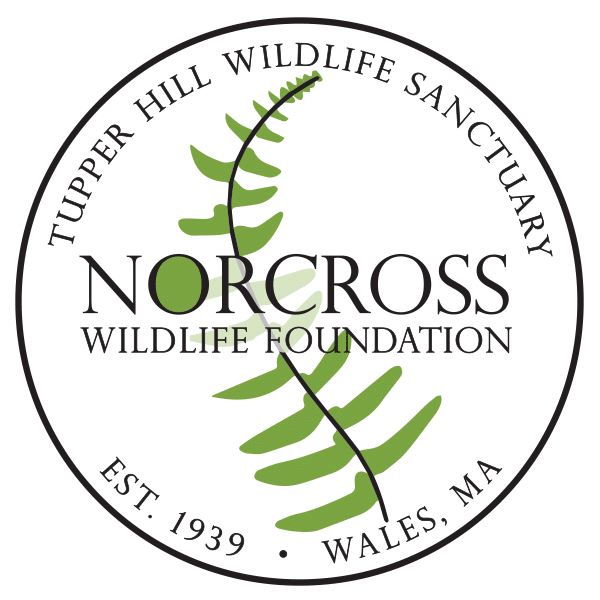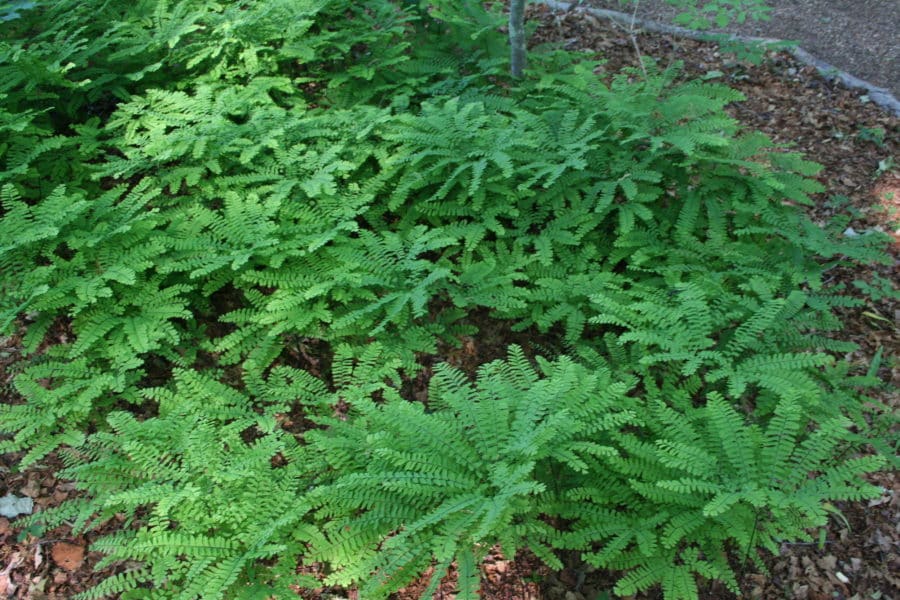The June 1, 2011 tornado had a huge impact on the people and the landscape of this region. On Saturday February 10th Jennifer Santoro and Danelle Laflower will present their lecture After the Tornado: Impacts on Massachusetts’ Forest at 1:30pm here at Norcross Wildlife Sanctuary. It has been six years since the EF-3 tornado covered 39 miles from West Springfield to Charlton. So what impact did that weather event have on our landscape? Today you can still see the tall, standing dead trees in places and the small trees growing in abundance along the tornado’s path.
As humans we seem to like to “clean things up” after such an event. Many areas were completely cleaned up – down to bare soil. In other areas the broken or twisted trees were removed or laid down in the forest. Brimfield State Forest, however, was different – no management or clean up took place after the tornado (except to clear the roads through the forest}. This part of the tornado path was treated differently than most areas.
Brimfield State forest is a “forest reserve” designated by the state. Forest reserves are portions of state lands where commercial harvesting of wood products is excluded in order to capture elements of biodiversity that can be missing from sustainably harvested sites. These reserves can be small or large and will ultimately support a wider diversity of tree sizes and ages than typically occurs on sustainably harvested sites, and will also support structures and processes associated with extensive accumulations of large woody debris that are typically absent from harvested sites.[lightbox link=”http://norcrosswildlife.org/wp-content/uploads/2018/01/path-e1516996106769.jpg” thumb=”http://norcrosswildlife.org/wp-content/uploads/2018/01/path-150×150.jpg” width=”150″ align=”right” title=”” frame=”true” icon=”image” caption=””]
The fact that many areas were cleared of debris, but the state forest was not provides the perfect opportunity for study. Danelle and Jennifer looked at re-growth in both areas. They will present their findings at this lecture. Was it better to leave all the debris? Did they find that seedlings more readily established themselves in the debris field? Did different species appear in cleared and un-cleared areas? What was the result of clearing the dead wood and tip ups? Come to the lecture and find out the effects of severe weather on our forests.
The tornado created a new situation in forested areas – large trees were felled and snapped. Instead of mature forest, the path became clearer, more open. The path created what is known as early successional habitat. If you are interested in the importance of this new habitat and our wildlife species, we have another speaker who will touch on these subjects. Jeff Ritterson of Mass Audubon will talk about the ways we manage our forests for wildlife (Foresters for the Birds, on Saturday March 17). Early successional habitat is hard to find in Massachusetts. Most areas are built (suburbs and cities) or have mature forest (rural areas). Early successional habitat is very important to some of our rarer species in Massachusetts –both plant and animal. To find out more, come and visit us this winter for these informative talks.
For a complete listing of our winter lecture series click here.



